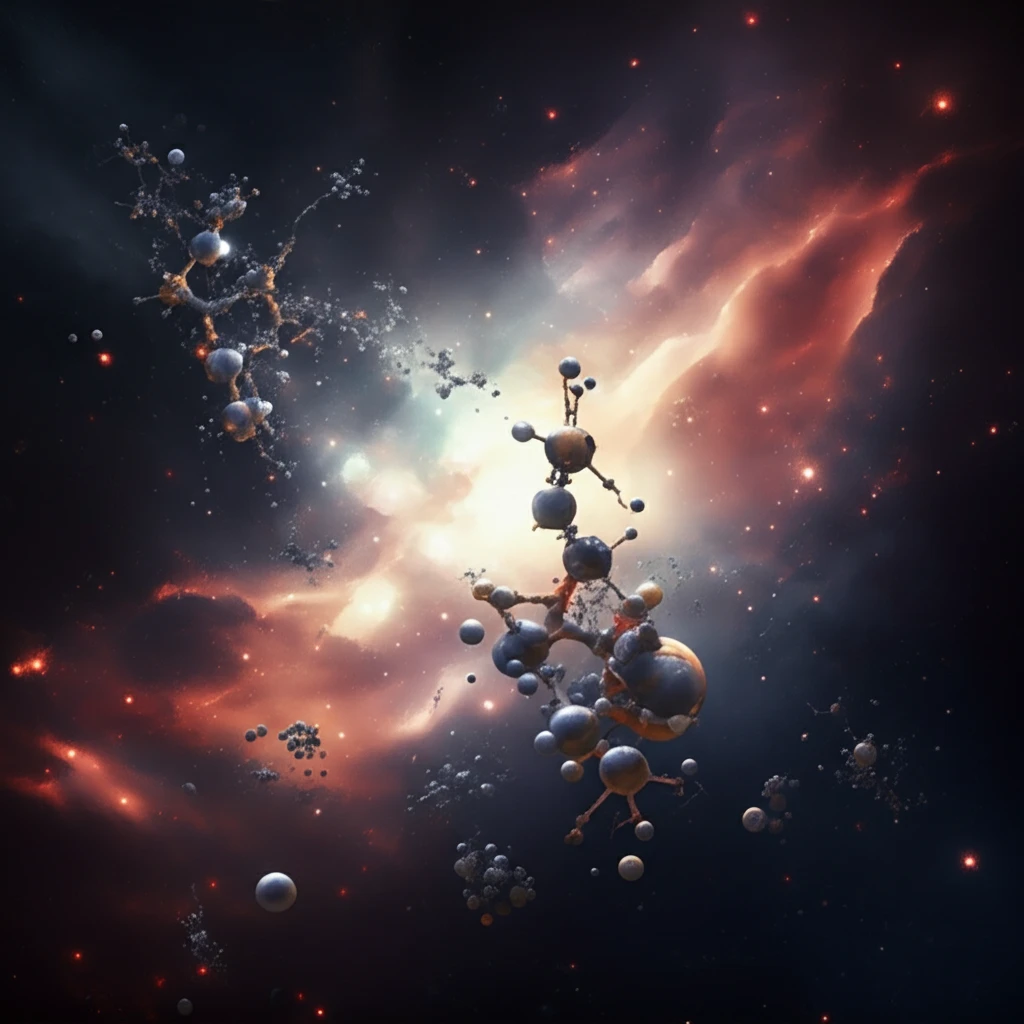
From Space Dust to Life's First Sugars: Unlocking the Formose Reaction in the Cosmos
"Could metal-ions and simple molecules hold the key to how prebiotic chemistry kickstarted in interstellar space? New research sheds light on the formose reaction and the origins of life."
The question of life's origin is one of the most profound mysteries. While several scientific theories attempt to explain this phenomenon, the 'chemical origin of life,' or abiogenesis, is a particularly compelling idea. This theory posits that life arose from the self-assembly of biopolymers, which themselves were created from simpler biomonomers. These biomonomers are theorized to have formed through chemical reactions involving small organic and inorganic molecules, either in the vast expanse of interstellar space (the interstellar medium, or ISM) or during the late heavy bombardment period on early Earth, billions of years ago.
Among these essential biomonomers, sugars hold a special place. Scientists believe that sugars could have been generated under prebiotic conditions through a process known as the formose reaction. This reaction, extensively studied for over two centuries, provides a plausible chemical pathway for the synthesis of sugars, the very building blocks of life. Yet, despite its importance and long history of investigation, significant gaps remain in our understanding, particularly concerning the very first step of the formose reaction.
The challenge lies in the nature of formaldehyde, the starting molecule. Formaldehyde lacks an enolizable hydrogen atom, making the formation of a carbon-carbon bond—a necessity for building more complex sugars—difficult. This hurdle necessitates either Umpolung strategies, which are not easily achievable under presumed abiotic conditions, or free-radical reactions. Now, a new study offers a fascinating perspective on this problem, proposing a novel reaction pathway for the gas-phase conversion of formaldehyde to glycolaldehyde—the crucial first step in the formose reaction—within the interstellar medium (ISM).
How Can Metal-Ions and Hydrogen Bonds Catalyze Sugar Formation?

The recent study, published in The Journal of Physical Chemistry A, explores the catalytic role of metal-ions and small molecules in the interstellar medium (ISM) to initiate the formose reaction. Researchers employed high-level electronic structure calculations, using both CCSD(T) and DFT methods, to investigate how these interstellar components could facilitate the conversion of formaldehyde into glycolaldehyde. This groundbreaking research provides an alternative mechanism to traditional Umpolung strategies or free-radical reactions, which are typically invoked to explain this process.
- Proton Affinities: The ability of molecules to accept protons influences the reaction.
- Metal-Oxygen Interactions: The strength of bonds between metal-ions and oxygen atoms plays a critical role.
- Carbon-Carbon Bond Formation: The ease with which the C-C bond forms dictates the overall reaction efficiency.
What Does This Mean for the Search for Life Beyond Earth?
This research provides a significant advancement in our understanding of how prebiotic chemistry may have unfolded in the early universe. By identifying the catalytic roles of metal-ions and hydrogen bonds in the formose reaction, this study suggests that the building blocks of life could have formed in interstellar space more readily than previously thought. These findings have significant implications for where and how we search for extraterrestrial life.
